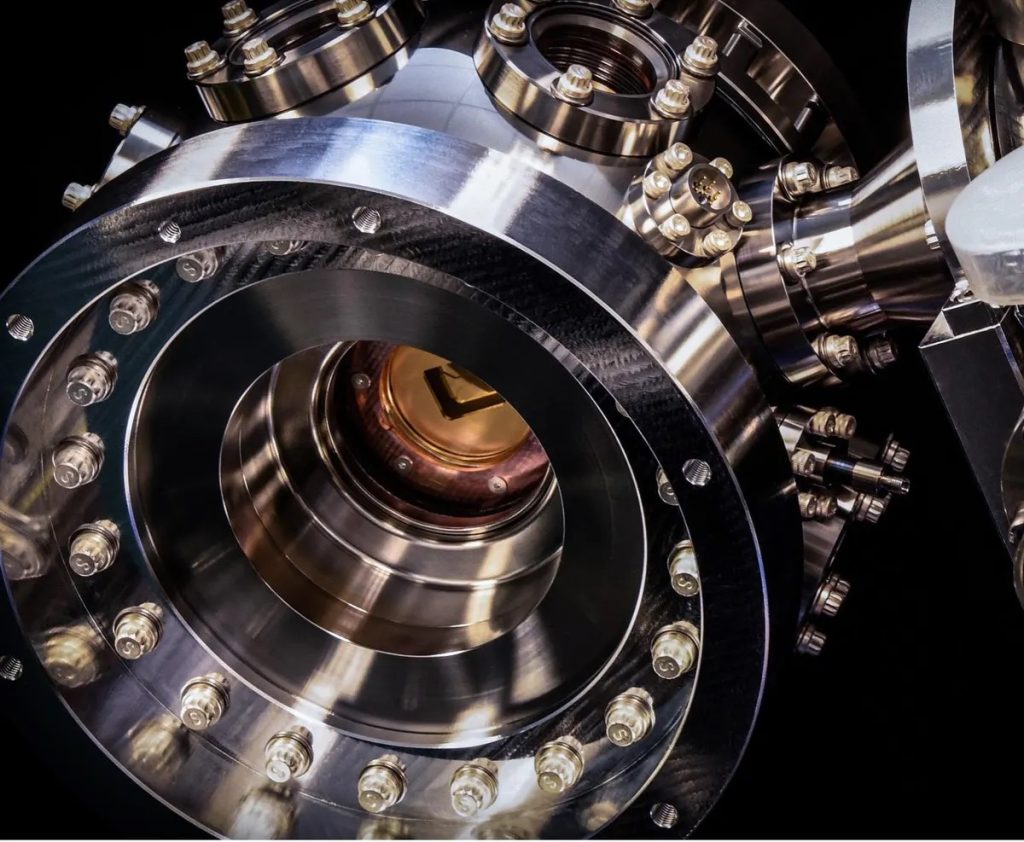The H2 features initially include 32 fully-connected, high-fidelity qubits and an all-new architecture that advances the System Model H1’s linear design (with a new ion trap whose oval shape resembles a “racetrack”).
H2 was used to demo a 32-qubit GHZ state (a non-classical state with all 32 qubits globally entangled).
The “racetrack” design of the System Model H2 enables all-to-all connectivity between qubits, meaning that every qubit in the H2 can directly be pairwise entangled with any other qubit in the system.
Near-term, doing so reduces the overall errors in algorithms, and long term opens up additional opportunities for new, more efficient error correcting codes – both critical for continuing to accelerate the capabilities of quantum computing.

When combined with the demonstration of controlled non-Abelian anyons, the integrated achievement highlights an important step in topological quantum information storage and processing.
H2 is a step towards showing the scaling potential of ion-trap devices.
Not only is H2 a demonstration of the scaling power of ion traps in the quantum charge coupled device (QCCD) architecture: showing the ability to simultaneously scale qubit number while maintaining performance, it also contains new technologies that pave the way for further scaling in subsequent generations.
Similar to the first-generation systems, H2 is designed to accommodate future upgrades over its product lifecycle, meaning that qubit number and qubit quality will both be improved upon.
Built on the foundations of Quantinuum’s H-Series, the H2, has a number if numerous hallmark features including: all-to-all connectivity, qubit reuse, mid-circuit measurement with conditional logic, industry leading high-fidelity qubit operations, and long coherence times.
The performance of the H1 to achieve repeatedly increasing Quantum Volume (QV) records is expected to continue with H2. H2 launches with a Quantum Volume 65,536 surpassing the last record announced using H1-1 in February of this year.
The H2 is available now through cloud-based access from Quantinuum and will be available through Microsoft Azure Quantum beginning in June.
Additionally, a noise-informed emulator of H2 is made possible through NVIDIA’s cuQuantum SDK of optimized libraries and tools, which help accelerate quantum computing simulation workflows
